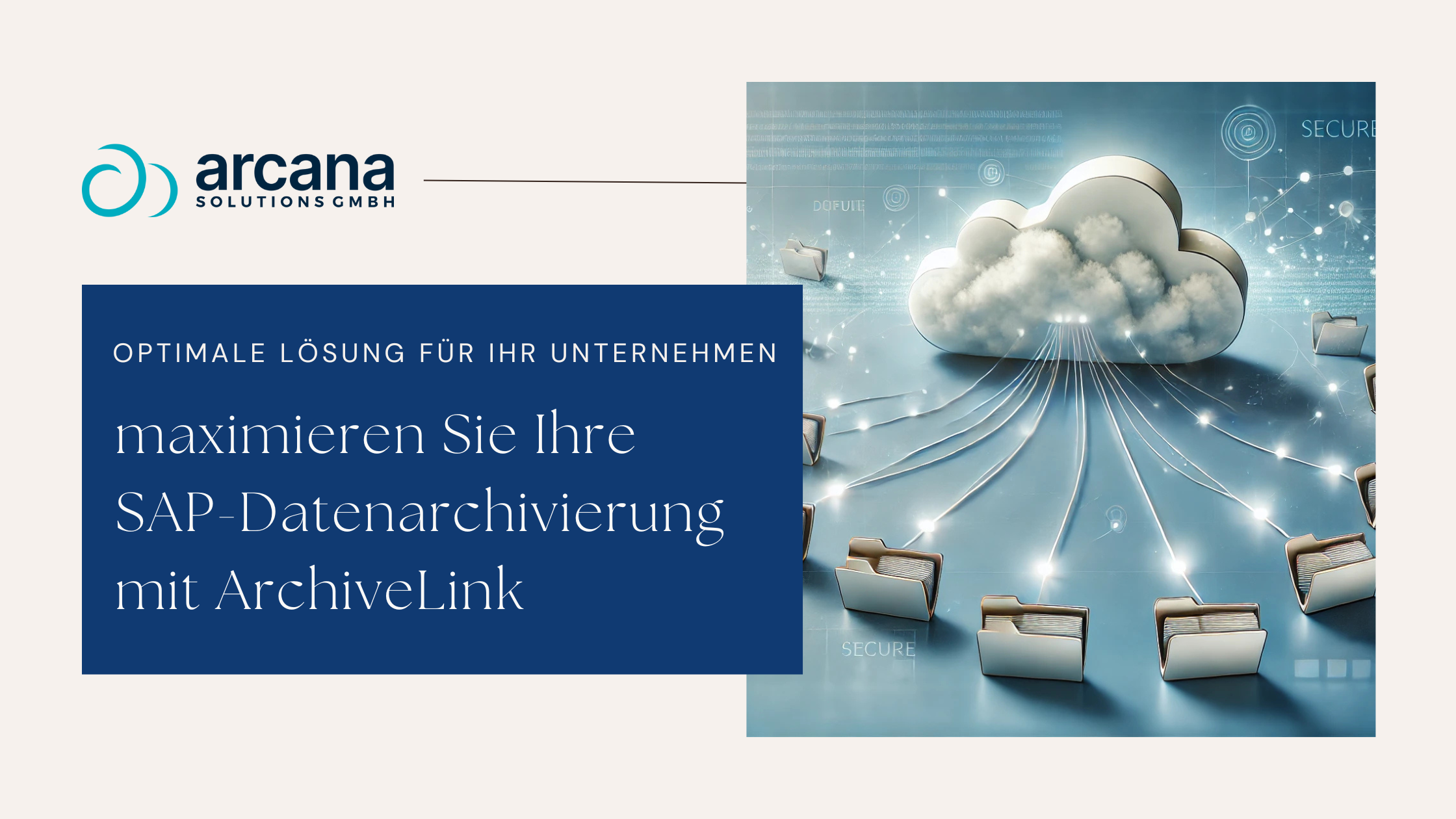In a digitalized world where data volumes continue to grow, the right data strategy is critical. Companies that rely on SAP face the challenge of not only storing their data but also managing it strategically to reduce costs while meeting compliance requirements. This is where data archiving and Information Lifecycle Management (ILM) come into play. In this blog post, we explore how ILM and data archiving work together to enable a sustainable and efficient data strategy.
What are Data Archiving and ILM?
- Data Archiving refers to the process of transferring data from productive systems to a long-term storage system. The goal is to free up storage space and computing power without having to give up access to the data.
- Information Lifecycle Management (ILM) is a strategic approach that manages the entire lifecycle of information. From creation to deletion, it regulates how long data is stored, when it is moved to archives, and when it is permanently deleted.
ILM and data archiving complement each other perfectly, as ILM ensures that data is retained only as long as it is legally or internally required. Archiving, on the other hand, ensures that this data is stored in a compliant and secure manner for later access.
Benefits of ILM and Data Archiving Combined
- Optimization of Storage Costs Data archiving saves storage space and relieves production systems, as only actively used data remains on more expensive, high-performance storage. Historical data is archived yet remains accessible at any time. ILM helps manage archived data according to predefined rules and delete it when no longer needed.
- Compliance with Legal Requirements ILM ensures that data is stored securely and immutably for the prescribed period. Automated rules integrated into ILM ensure that data is retained only to the extent necessary and for the prescribed duration.
- Optimization of System Performance Production systems remain lean and fast through archiving. By keeping only current, relevant data on the productive system, companies enhance the efficiency of their systems and enable faster data access.
- Automation and Reduction of Manual Tasks With ILM, many data management tasks are automated. This makes data flow more efficient, and IT administrators can focus on strategic tasks.
- Reduction of Compliance Risks Data archiving and ILM together help minimize compliance risk. Standardized and automated procedures ensure that companies are always audit-ready and compliant.
How do Companies Implement ILM and Data Archiving in SAP? In SAP environments, integrating ILM and data archiving is an important step to optimize data storage and reliably meet legal requirements. Many companies use ILM to automatically control archiving and deletion processes for their SAP data, relieving IT departments and significantly simplifying data management. For example, invoices, customer information, or personnel files can be archived after a defined period and remain available when needed – without burdening the main system. Additionally, the SAP system with ILM and the right archiving solution is future-proof and flexibly scalable.
Conclusion: Efficient Data Archiving with ILM – More Than Just Saving Storage Space ILM and data archiving enable companies to sustainably and strategically manage their data. By combining these two approaches, not only is storage space saved, but compliance requirements are also met, and system performance is optimized. Are you ready to optimize your SAP data archiving strategy? Our experts at Arcana Solutions GmbH are here to help you optimally integrate ILM and data archiving into your systems and make your data strategy future-proof.
Your team at arcana solutions GmbH




